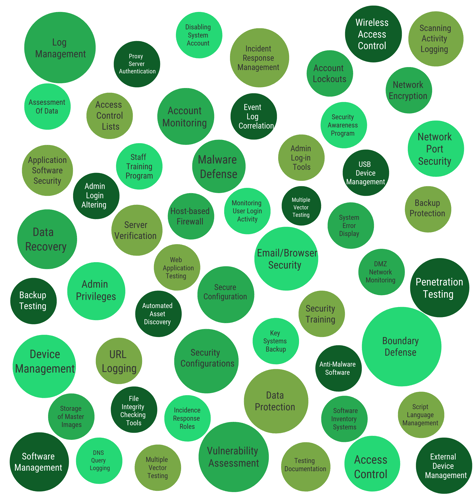Everything You Never Knew (but Need to) About Endpoint Security
What it is, why it matters, and what it looks like in today’s cybersecurity landscape.
Endpoint security may seem complicated, but it’s quite simple: it’s the process of securing a network’s various endpoints.
These typically include end-user devices, like laptops, desktop PCs, mobile devices, and more. Hardware like servers is also considered an endpoint. Today, most cybersecurity experts agree that the definition of an “endpoint” varies.
At its core, endpoint security seeks to identify and address the risks presented by devices that want to connect to an enterprise network. In recent years, endpoint attack attempts have skyrocketed, and many organizations aren’t sure how to cope.
Combine this with the fact that endpoint attacks are 4x as likely as traditional attack methods to bypass existing defenses, and it becomes clear exactly how essential endpoint security is in today’s digital world.
Why Endpoint Security Matters
Endpoint attacks are on the rise, and they’re costing U.S. companies.
Each day, organizations in the U.S. lose millions due to fileless and zero-day attacks.
According to the Ponemon Institute’s 2018 State of Endpoint Security Risk Report, 70% of survey respondents believe that threats against organizations have increased in recent years.
And they’re not wrong.
The frequency of endpoint attacks is rising. Meanwhile, the growth in successful attacks is undermining endpoint security confidence.
As if that weren’t enough, the cost of a successful endpoint attack has also risen from an average of $5 million to a staggering $7.1 million.
As it stands now, any device, including smartphones, tablets, and laptops provide a reasonable access point for threats. Because of this, endpoint security has become increasingly critical. Aiming to secure an organization’s endpoints is the best way to block unwanted access attempts and dangerous activities at points of entry.
This has become especially important in a world where more organizations allow BYOD (Bring Your Own Device) and remote teams. When the network security perimeter dissolves as it has, cybersecurity innovation becomes essential.

We already Have Antivirus Software, Why Do We Need Endpoint Security?
While the two work together to ensure quality security, they are not the same thing.
Endpoint security and anti-virus software are two very different things. The endpoint security framework requires endpoints to adopt responsibility for their security. This is different from network security, where security measures cover an entire network, rather than individual devices or servers.
Endpoint security also focuses on functionalities like email encryption, data loss prevention, network access control, and data classification. Contrary to popular belief, endpoint security is not reliant on individual devices. Instead, most endpoint security offers a dual approach. This approach requires the installation of security software on a central server, as well as on individual devices.
Implementing Endpoint Security
Endpoint security offers many benefits. In addition to being low-maintenance, it’s possible to implement it without destroying your budget. Here are a few tips for easy endpoint security adoption:
- Get employees onboard. Right now, about 91% of cyber threats begin as phishing attacks. When a user opens an email from an unknown source, they expose your systems to root-kit injections, ransomware, and more. Because of this, the first step toward endpoint security should always be to inform your employees about your goal. They should understand the basics of avoiding phishing attacks, and there should be a plan in place to report any suspicious activity to the IT department.
- Implement antivirus software with event logs. Installing active threat-detection programs is an easy way to protect your system. These active protection programs should offer real-time app monitoring, network firewalls, and event logging in a central dashboard, organized by time, event data, and computer. This approach lays the foundation for your cyber attack threat detection and prevention program.
- Streamline your incident response. Digital threats have undergone massive change in recent years. Because of this, it’s critical to develop an incident response plan that allows you to ward off cyber attacks. Many programs on the market can help you do this, but a few of the top are Elasticsearch, NXLog, and Kibana.
Endpoint Security is Part of a Complete Cybersecurity Program
Apptega is cybersecurity management software that helps you build, manage and report your cybersecurity program. Best of all, you can manage endpoint security and hundreds of other cybersecurity requirements all on one platform.

How do we do it?
Through a series of intuitive apps that manage your entire cybersecurity program with real-time compliance scoring, project life cycle, task management and alerts all in one place. With Apptega’s user-friendly interface, your entire cybersecurity program is organized for simple implementation and reporting including for endpoint security.
Apptega was created for companies just like you. Want to learn more? Click here to schedule a demo to see the many ways Apptega makes managing cybersecurity simple.
*** This is a Security Bloggers Network syndicated blog from Apptega Blog authored by Apptega. Read the original post at: https://blog.apptega.com/endpoint-security





